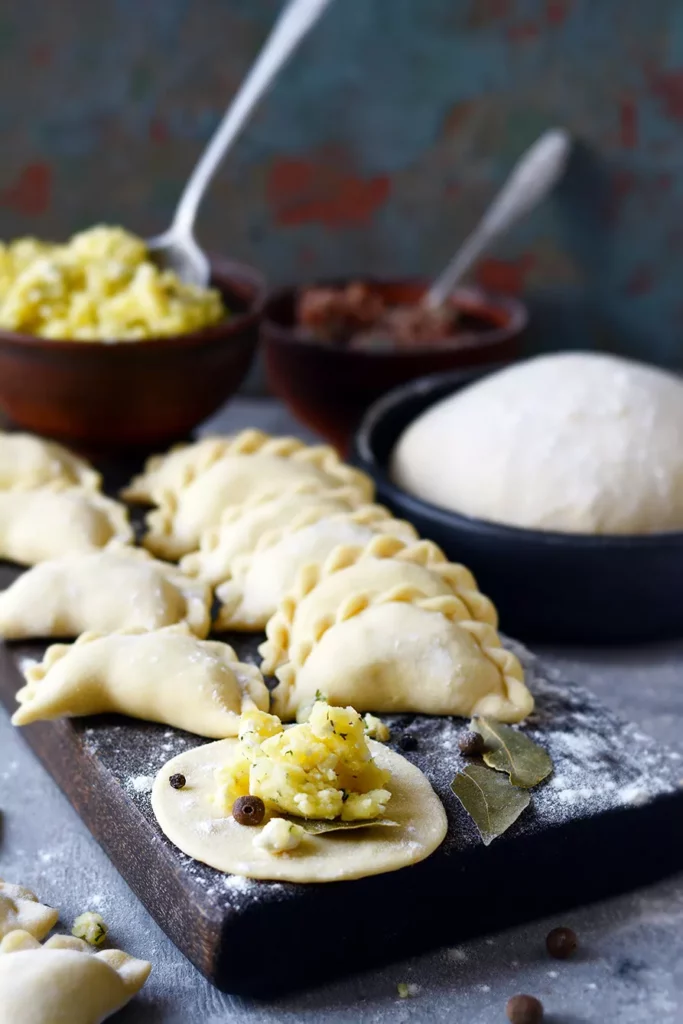Ruskie pierogi have recently given Polish chefs a royal headache (ruskie to most people connotating with the adjective – Russian). They are vanishing from your local markets, bars, restaurants, and bistros faster than portions of this delicious dish from plates – or rather, they are now making an appearance under new names.
Potato pierogi, cheese-and-potato pierogi, or even Ukrainian pierogi – the names are coming fast and furious. There might soon be a prize for the most inventive way of renaming these humble cottage cheese-and-potato-filled dumplings.
As understandable as this new trend is, the question remains whether the sudden uprising against good-old ruskie is justified. Unfortunately, those who think they have managed to make a political stand might be disillusioned, as the name actually has nothing to do with the Russian State as we know it today. Perhaps it will come as a consolation to learn a little more about the history of this famous dish.
The Chinese had already done it all

The first dumplings as we think of them (a rather sticky, boiled dough hiding a mouthwatering filling inside) were actually invented in China. They made their way to Europe thanks to Marco Polo and were first introduced in Poland in the 13th century by the Polish bishop Jacek Odrowąż.
It is said that he tried them during his stay in Kyiv and found the dish so delicious that he brought it with him back to his home country. As legend has it, when famine hit the southern regions of Poland, he fed the starving people with pierogi, which he prepared himself.
And there we have it – pierogi were brought to the native Polish lands from Kyiv – the main city of the Kievan Rus. The geographic location of Rus is the only reason one of the varieties has the word ‘ruskie’ in its name. It may be shocking to some, but the same type of dumpling is called ‘Polish’ over our Eastern borders – in Ukraine and today’s Russia.
Ruskie means ‘of Rus’
If we think about the troubled history of our region, it should not come as a surprise that the name ruskie pierogi has already caused some commotion in the past. Not long after the Second World War, it was used to joke about the occupation of the Soviets (A: Who ordered ruskie? B: No one, they came on their own accord.)
It is said that in Wrocław, they were known for quite a long time as the ‘lwowskie’ pierogi due to numerous repatriates forced to leave Lviv after establishing the new borders. The word ‘pierogi’ itself derives from the old Slavonic word ‘pir,’ which was used to describe ceremonial patties. It turns out that this common dish was originally served only during special feasts, with different fillings and shapes marking different occasions.
Pierogi: Sticky dough to cement bonds
The first known recipe for pierogi comes from the Compendium Ferculorum – the oldest known Polish cookbook. It was printed in Cracow in 1682 and offered a recipe for pierogi filled with meat and suet. Therefore, pierogi have come a long way in Polish national cuisine, starting as a novelty, to be deemed worthy of preserving in print when books were scarce and precious, and finally becoming a trademark known by all who visit.
Since they are not difficult to prepare, it would be amazing if the tradition of making this long-standing Polish dish was kept alive in Polish homes. If the final product is not enough to encourage you to try, think about all those fascinating conversations and bonding time you have when preparing the dish with your loved ones. The dough is sticky for a purpose – it brings us closer together!







